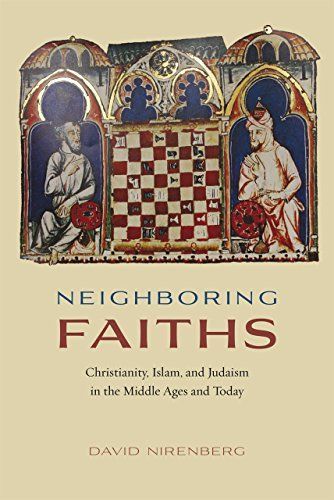
Neighboring Faiths Christianity, Islam, and Judaism in the Middle Ages and Today
This book represents the culmination of David Nirenberg's ongoing project; namely, how Muslims, Christians, and Jews lived with and thought about each other in the Middle Ages, and what the medieval past can tell us about how they do so today. There have been scripture based studies of the three religions of the book” that claim descent from Abraham, but Nirenberg goes beyond those to pay close attention to how the three religious neighbors loved, tolerated, massacred, and expelled each otherall in the name of Godin periods and places both long ago and far away. Whether Christian Crusaders and settlers in Islamic-ruled lands, or Jewish-Muslim relations in Christian-controlled Iberia, for Nirenberg, the three religions need to be studied in terms of how each affected the development of the other over time, their proximity of religious and philosophical thought as well as their overlapping geographies, and how the three neighbors” define (and continue to define) themselves and their place in the here-and-nowand the here-afterin terms of one another. Arguing against exemplary histories, static models of tolerance versus prosecution, or so-called Golden Ages and Black Legends, Nirenberg offers here instead a story that is more dynamic and interdependent, one where Muslim, Jewish, and Christian communities have re-imagined themselves, not only as abstractions of categories in each other's theologies and ideologies, but by living with each other every day as neighbors jostling each other on the street. From dangerous attractions leading to interfaith marriage, to interreligious conflicts leading to segregation, violence, and sometimes extermination, to strategies of bridging the interfaith gap through language, vocabulary, and poetryNirenberg aims to understand the intertwined past of the three faiths as a way for their heirs to coproduce the future.